The Santa Barbara Bowl Foundation Instrument Fund ensures that lack of an instrument doesn’t prevent a child from learning to play music. The Bowl collaborates with Nick Rail Music and the Jensen Music Foundation, who play key roles in coordinating instrument collection and repair for Santa Barbara County youth music programs.
Nick Rail Music, established in 1986, is now celebrating 30 years as a mainstay of the Santa Barbara music scene. We sat down with Nick Rail, founder and president of Nick Rail Music, to chat about his passion to support Santa Barbara’s youth through music, and how his relationship with the Santa Barbara Bowl Foundation and the Instrument Fund changes children’s lives.
Nick's Backstory
Nick joined Band in fourth grade on clarinet, switching to trumpet and tenor sax in high school. He studied music at UC Berkeley and UC Santa Barbara, then band instrument repair on the East Coast, returning to Santa Barbara in 1974 as a repair tech at La Grandeur Music.
The store changed hands in 1984 and Nick, not caring for the new owner, started Nick Rail Music across the street. Today, Nick Rail Music continues its mission to provide band and orchestral instruments to both the school market and the private or professional musicians.
“It’s wonderful having a job where the work is helping people play and enjoy music. How cool is that?.” - Nick Rail
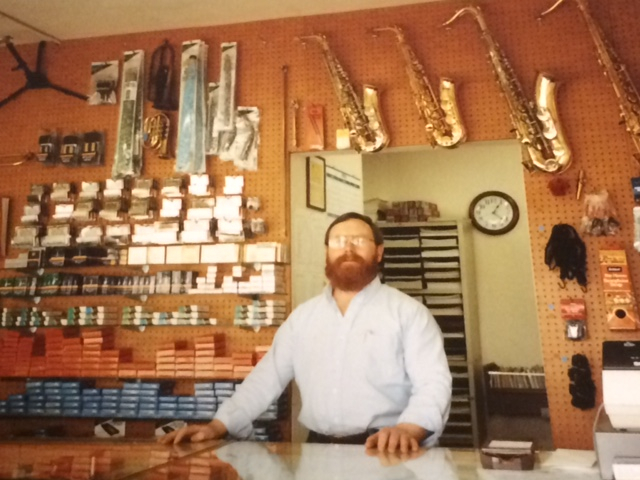
Bowl: What inspired you to partner with the Santa Barbara Bowl and be a part of the Instrument Fund?
Nick: I guess i'm going to give you a roundabout answer. When I was very young my older brother, a year older, showed immense artistic ability at a very young age. At three or four he was already doing some drawing and painting. As he proceeded through elementary school he was entered in the County Fair where they would judged him against the adults, when he was eight or nine, and he would get all the blue ribbons.
Here I am watching him, and proud of him, but wondering what's Nick going to do, what’s going to happen to me? I had no idea, no sense of self. When I was nine years old going into fourth grade, our elementary school decided to start a band program, and my parents said I could take up the clarinet. From then on I had a vision, of what I liked to do, I had something that was different than what my brother did, not to compete with him but just something I enjoyed, that I could do.
Fast forward that to today the basic reason I get out of bed, and many of us get out of bed at Nick Rail Music, is to give other kids that sort of experience. Whether it's through the retail process or giving back to the community in a more charitable way.
Bowl: How did you move from clarinet to Nick Rail Music?
Nick: When I graduated from high school, I went to UC Berkeley and UC Santa Barbara. I was planning on being a band director. In fact, I wanted to do just what my high school band director did.
I came from a small community, I was a very small fish in a very big pond, but after a couple years I decided, ‘I'm not going to be a band director.’ I knew I could do it, but after looking at where everybody else was in relation to where I was — and the standards that I think I should uphold to be a good band director, well, by the time I was as good as I thought I should be I would probably be 112.
I didn't want to go out there and learn the craft at the cost of the kids education. So I decided to get into repair; I went back east and studied instrument repair. When I returned to Santa Barbara I went to work for a company that was just two blocks up from here [Nick Rail Music on De la Vina Street] at the time.
The heart of our business has always been based upon repairing instruments. Repairing band instruments is a little bit of a lost craft, and very important to us. All these things have moving parts, they do need maintenance, they do get broken, they get damaged. The repair shop [at Nick Rail Music] has a whole bunch of instruments in for repair. During the summer we fill two metal containers full of instruments — all waiting to be repaired. In the course of a 12-month period we probably go through something like 4,000 instruments. Summer is very intensive, all the instruments come in during those two to three months and we process about 1,500 instruments during the summer.
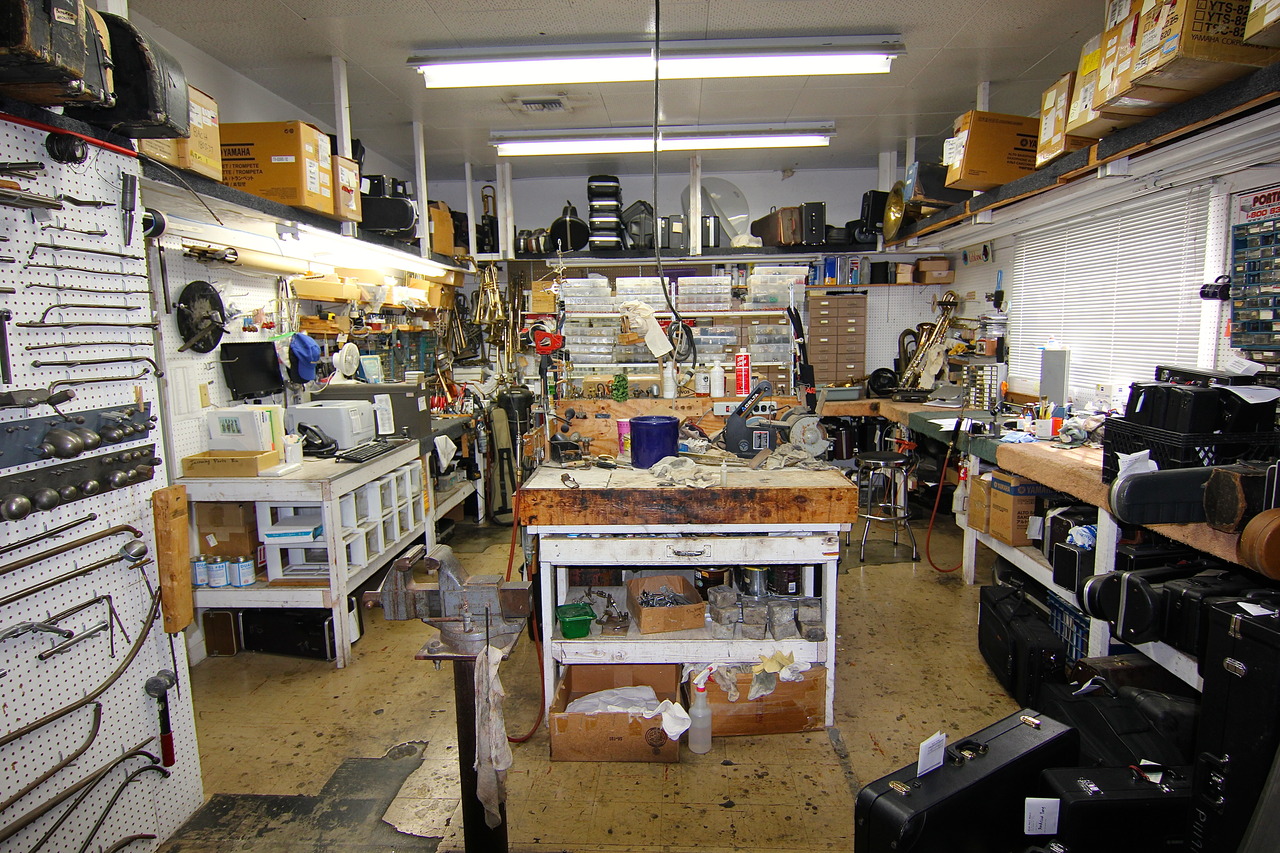
Bowl: Who pays for the repair, the parents, the schools?
Nick: A little bit of both, sometimes the school district will have some funds to dedicate to it. For probably 20 years all the schools had an annual budget of $250 each including piano tuning to keep their stuff in shape, and that's like having a $10 annual budget to keep your car running.
Schools have been able to build their budgets within the last 5-10 years, and they have resources — most obviously the Santa Barbara Bowl — to help them with the maintenance of the instruments. Booster groups will also raise money, but it's a difficult thing to raise money for, they want to donate money towards buying a tuba, not fixing a tuba, it’s not as tangible. Parents will pay for them individually as well yes.
Bowl: Have you seen an impact on the Bowl helping to pay for instrument repairs?
Nick: Absolutely, no question, big impact. The participation of the Bowl has made a big difference in the instruments the teachers are able to bring in for repair over the school year. During the summer some teachers get a budget to have instruments repaired and ready for the fall, but then if something happens over the school year the budgets not there anymore. Not being able to repair an instrument mid-year is especially tragic because you have a kid who's been playing and then suddenly the kids not playing, and there is not a good explanation why the kid can't still play.
If it's, ‘I didn't have an instrument to give you at the start of the school year so you don't have the experience,’ in one sense that's better. It's not what we want but it's not as painful because the kid isn't ‘okay we're taking your instrument away, maybe you'll see it, maybe you want it in a month or two, just be patient and keep your interest up in the class, but you don't have an instrument to play.’
That's where I see the Bowl making the biggest impact: helping the repair of the instruments continue throughout the entire school year.
Bowl: What is the state of the schools with the quantity of instruments have available?
Nick: With musical instruments — when we think of repair — we think, ‘It’s not working correctly or there's something wrong with the design,’ or ‘It was a bad brand,’ or ‘i didn’t treat it right.’
But there are a lot of moving parts with musical instruments so think of it more perhaps as necessary periodic maintenance. If you don't get your car tuned up for 15,000 miles it still runs, but it doesn't run like it should run, and the more you drive it without the tune up the faster it wears out because whatever you have to do, it has to work a little harder to perform.
Same thing with brass and woodwind instruments: If they're not working at their best they don't perform as well, so the kids have a tougher time, and the life of the instrument can be short.
The condition of the inventory of the school district has improved a lot over the past 30 years for a couple reasons. Starting about 25 years ago I got a little tired of working on some of the district's inventory that was very old. So at that time I started a trust fund where I would raise money to donate instruments to the district, but every time I gave them one they had to give me something that I wanted to take out of the inventory because I thought it didn't belong there, so that went a certain way towards cleaning the inventory up and then different foundations started donating instruments to the district so we were able to rinse out some of the bad product and a lot more newer inventory came in.
In terms of repair budgets, repair is a difficult thing to find money for, and that's why the Bowl is so important.
A district perhaps rightfully, doesn't look at saxophone maintenance like they look at computer maintenance or school bus maintenance, there's X amount of dollars and it's going to go the school bus and the coffee machine before it goes to the saxophone. Those repair budgets while they have improved from the $250 a year, are still not where they need to be for the inventory to be in really good operating condition.
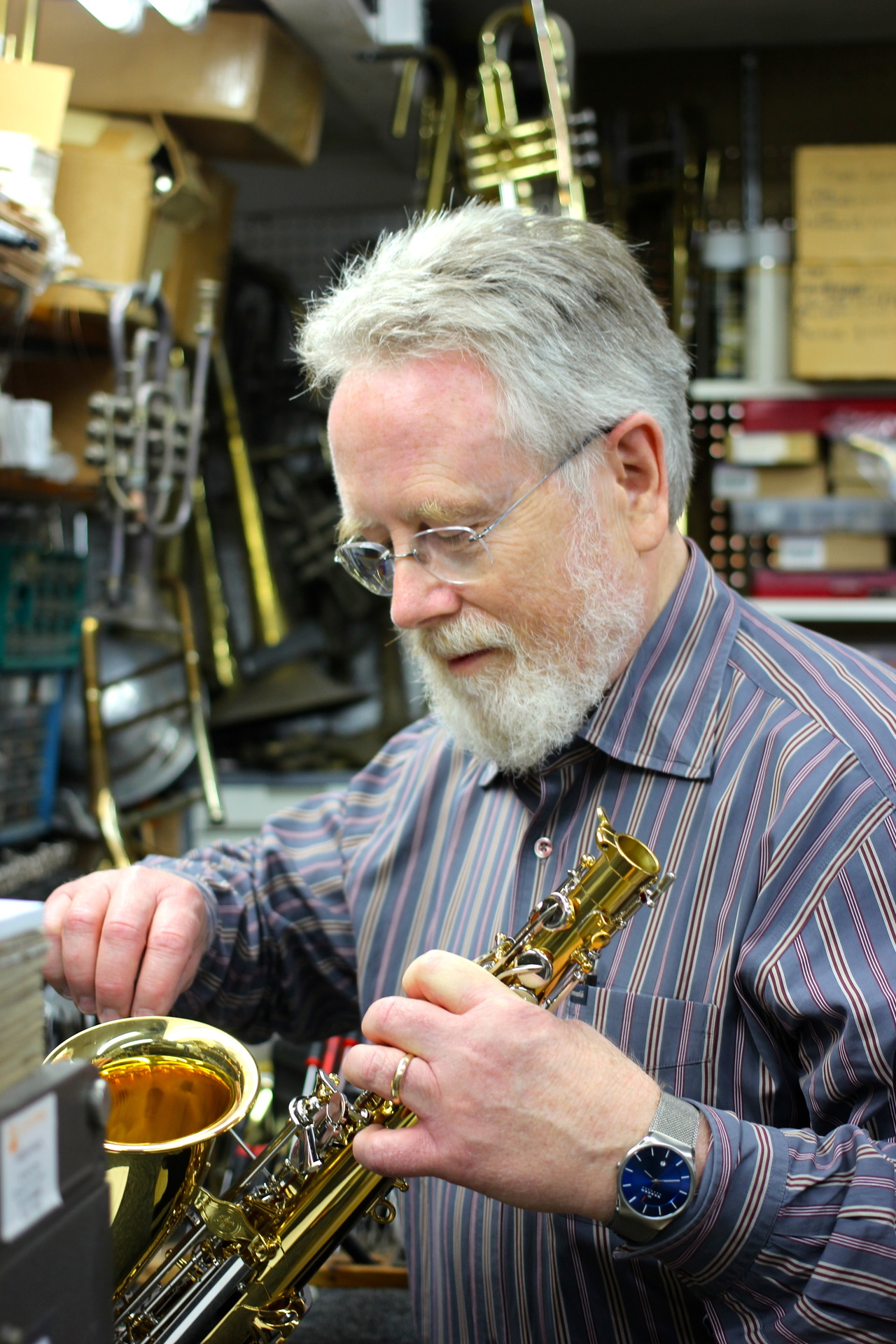
Bowl: Is your repair inventory ongoing with the bulk of repairs in the summer?
Nick: In terms of running out of instruments to repair, the last time i recall running out of instruments for repair was when I was working at a music store up the street in 1978: we ran out for two days.
Bowl: What is your relationship with Jensen's Music [located across the street from Nick Rail Music]?
Nick: We have a very good relationship with Jensen, everything we do they don’t, and everything they do we don’t, so there is very little overlap despite the fact that they are directly across the street.
In our business as a school music dealer, the primary focus is on brass and woodwind instruments, though we also sell percussion, orchestral strings, and guitars. Basically we sell everything in the band room except for the band director and the kids.
Music stands, chairs, filing cabinets, everything. And while we sell lots and lots of guitars were selling entry level guitars to school districts, over at Jensen's they have high-end, lots of different brands, and teach lessons. Very different. They are not competition, more of extended family with De La Vina Street running in the middle of it.
Nick: Depending on what the inventory is, some of the instruments the school's own go back 20, 30, 40 years. Some of the stuff I helped them get rid of because I didn't think it was serving a good purpose, back in the 90’s, there were sax Santa Barbara Junior High had that didn't have any finish left on it and stunk, just because all the raw grass in there, that was from maybe the 1920s, and it wasn’t a good instrument when it was made in the 20’s.
Bowl: How do instruments get damaged?
Nick: That sax [points to a sax in the repair show] retails for over $10,000 and it got run over while in its case on the driveway, we fix a lot of stuff right there. Back in the day I had a record of ten horns run over in four days.
Bowl: How many instruments do you repair a day?
Nick: It all flows differently every day, some are big jobs and complete overhauls take days, others a minute so it’s all over the map.
"In terms of running out of instruments to repair, the last time i recall running out of instruments for repair was when I was working at a music store up the street in 1978: we ran out for two days."
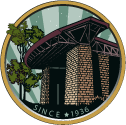 Santa Barbara Bowl
Santa Barbara Bowl
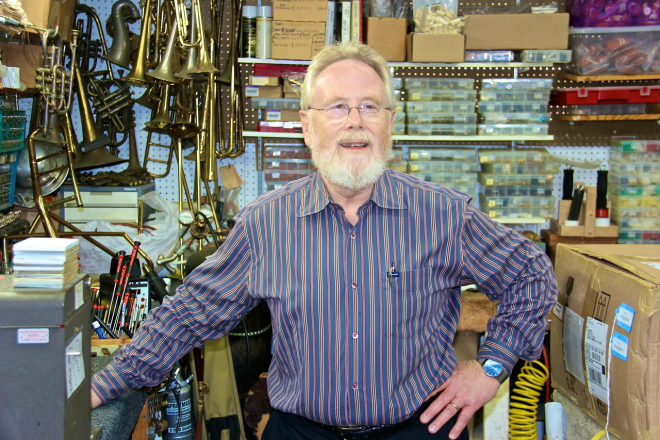
-3_179_120_s_c1.jpg)
_179_120_s_c1.jpg)
_179_120_s_c1.jpg)
-5_179_120_s_c1.jpg)
-4_179_120_s_c1.jpg)